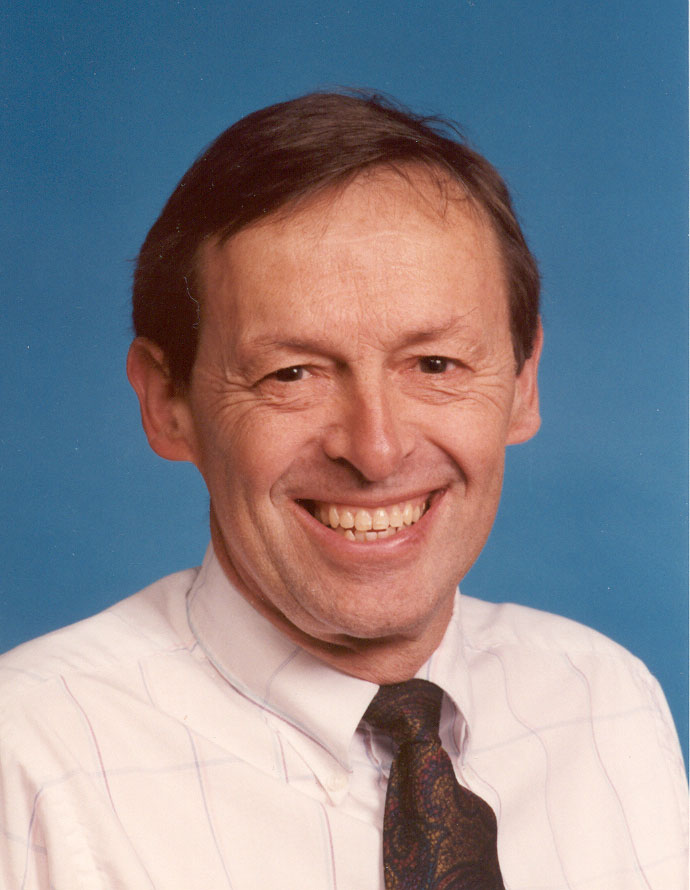Douglas Cline

Professor of Physics
Department
of Physics and Astronomy
University of Rochester
Rochester, NY 14627-0171
| Telephone: | 585-275-4934 | |
Email: |
Douglas Cline |
 |
||||||
Professor of Physics Department
of Physics and Astronomy |
|||||||
|
|||||||
Biographical:
Doug received his B.Sc.1st Class Honours in Physics, (1957) and his Ph.D.
in
Physics (1963) both from the University of Manchester. He joined the University
of Rochester
in 1963 as a Research Associate, and was promoted to Assistant Professor (1965),
Associate Professor(1970), and Professor (1977). At the University of Rochester
Nuclear Structure Research Laboratory he served as Associate Director (1977-88)
and Director (1988-1999). He has held visiting appointments at Laval University,
(1965), Niels Bohr Institute in Copenhagen (1973), Lawrence Berkeley Laboratory
(1975-76), Australian National University (1978), and the University of Uppsala
(1981). He is a Fellow of the American Physical Society (1981), and a recipent of the Lawrence Berkeley Laboratory Gammasphere Dedication Award (1995), the Award for Excellence in Teaching from the Department of Physics and Astronomy (2007, 2009), and the 2013 Marian Smoluchowski Medal from the Polish Physical Society. Further information
regarding Doug are available on his Research webpage and the Cline family page.
Research:
The current research interests
in the field of experimental nuclear structure physics are described on the Research webpage.
Mean field theories of the nucleus have strong predictive power throughout the nuclear landscape from stable to the limits of stability. Their development is essential to the understanding of nuclear structure, nuclear astrophysics, and to many applications of nuclear science. The goal of the program is to provide evidence needed to develop such improved theories. Nuclear structure in stable, and neutron-rich nuclei far from stability, has been studied to high angular momentum in order to map the evolution of shell structure and collective modes with increasing neutron richness and spin. Exotic isomeric states have unusually simple shell configurations providing an ideal testing ground of mean fields and residual interactions. The properties of such isomers have been measured and used to elucidate possible candidates for stimulated depopulation since these could lead to controllable release of stored energy. This research has played a significant
role
in the
development of the current and next generation high-resolution 
 -ray
detectors, such as Gammasphere and GRETINA,
as well as development of large solid angle heavy-ion detector arrays,
such as CHICO2 , Bambino and JANUS for use with such
-ray
detectors, such as Gammasphere and GRETINA,
as well as development of large solid angle heavy-ion detector arrays,
such as CHICO2 , Bambino and JANUS for use with such 
 -ray detector arrays. The research program has exploited both stable as well as exotic beams provided by radioactive beam facilities, such as CHICO/Gammasphere at the ATLAS/CARIBU, Bambino/TIGRESS at the TRIUMF/ISACII, and MiniBall at the CERN/ISOLDE. The research was supported by grants from the National Science Foundation.
-ray detector arrays. The research program has exploited both stable as well as exotic beams provided by radioactive beam facilities, such as CHICO/Gammasphere at the ATLAS/CARIBU, Bambino/TIGRESS at the TRIUMF/ISACII, and MiniBall at the CERN/ISOLDE. The research was supported by grants from the National Science Foundation.
National:
Doug has served on program, executive and advisory committees including the DOE/NSF
Nuclear Science Advisory Committee (1983-89, Brookhaven National Laboratory, Lawrence
Berkeley National Laboratory, Oak Ridge National Laboratory, Argonne National
Laboratory, Michigan State University. He served as Associate Editor of Physical
Review C (1988-1992). He was a founding member (1987-91), and chair (1989-91), of the Gammasphere
Steering Committee as well as a member of the Gammasphere Scientific Advisory
Committee (1991-99). He was a founding member of the GRETA/GRETINA Steering Committee
(1998- 2013) as well as chair of the DOE Gamma-Ray
Tracking Coordinating Committee (2002) which were involved in the design and implementation of the gamma-ray tracking detector array GRETINA, plus the proposed upgrade to GRETA. These will play a crucial role for exploiting the rare isotope facility FRIB currently under construction.
Teaching and service:
Doug has taught many undergraduate and graduate physics courses during 1965 - 2015. Recent courses include P235 Classical Mechanics (1993-2015), as well as P142 Electromagnetism and P114 General Physics. Graduate teaching has led to the following graduate thesis students. Doug served for many years on the University Radiation Safety Committee, and his Departmental
responsibilities have included the Committee on Promotions an Appointments.